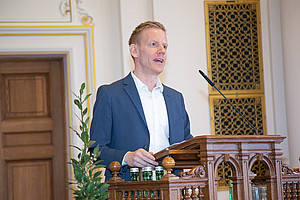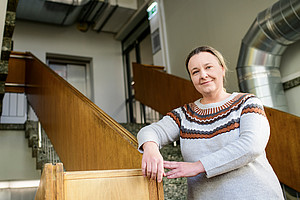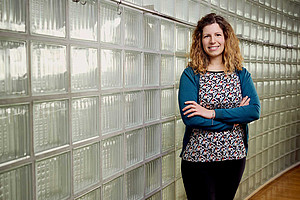Around ten percent of Austria’s labour force is affected by burnout. Yet this condition is difficult to diagnose and hard to treat with scientific criteria alone. Philosopher Reinhold Esterbauer and sport researcher Andrea Paletta have combined an empirical approach with a subjective aspect hitherto ignored – namely individual feelings, which are difficult to quantify – in order to develop new preventative treatments and therapies.
The body – which in philosophy comprises not only the subjectively experienced organism one has, but also that which one is – is the subject of Esterbauer’s research, which pertains to the body’s temporal structures. They are particularly noticeable for all of us, for example, when falling asleep and waking up, or as we get older.
The act of becoming tired itself is a consequence of our individual inner clocks. “We have all experienced the situation in which we would like to continue reading before going to bed, but we can’t keep our eyes open. The body wins and temporarily takes our conscience away from us”, as the researcher specifies. This could imply that, to a certain extent, burnout is a time-related condition, one that disrupts regular cycles. “If this weren’t the case, sufferers would be able to fight it consciously.”
In cooperation with the St. Radegund rehabilitation centre, close to Graz, Esterbauer und Paletta conducted empirical studies and observed that burnout sufferers’ individual rhythms had indeed got out of sync. “When telling a group of burnout sufferers to move about freely in the gym, they would listlessly shuffle along in a straight line. Healthy people, on the other hand, used up more space, were dynamic and their movements displayed more variety”, reports the sport researcher.
Paletta also concluded that in addition to the disturbance of one’s biological functions – heartbeat, breathing and sleep – regular daily activities, such as meals and therapy appointments, were also felt to be a burden. Both factors improved towards the end of treatment with certain sport activities. In turn, those suffering from burnout aligned with the healthy participants in terms of their perception of time.
The researchers then put together comprehensive exercises which, on the one hand, burnout sufferers can use to stabilise their individual rhythms sustainably and, on the other hand, can be used as a preventative measure for those experiencing stress. The exercise book can be downloaded.
The research was conducted as part of the “Bodytime” project, financed by the Austrian Science Fund. Reinhold Esterbauer, Andrea Paletta and Julia Meer have summarised the most important results in their newly published book, Der Leib und seine Zeit, available in German only.




